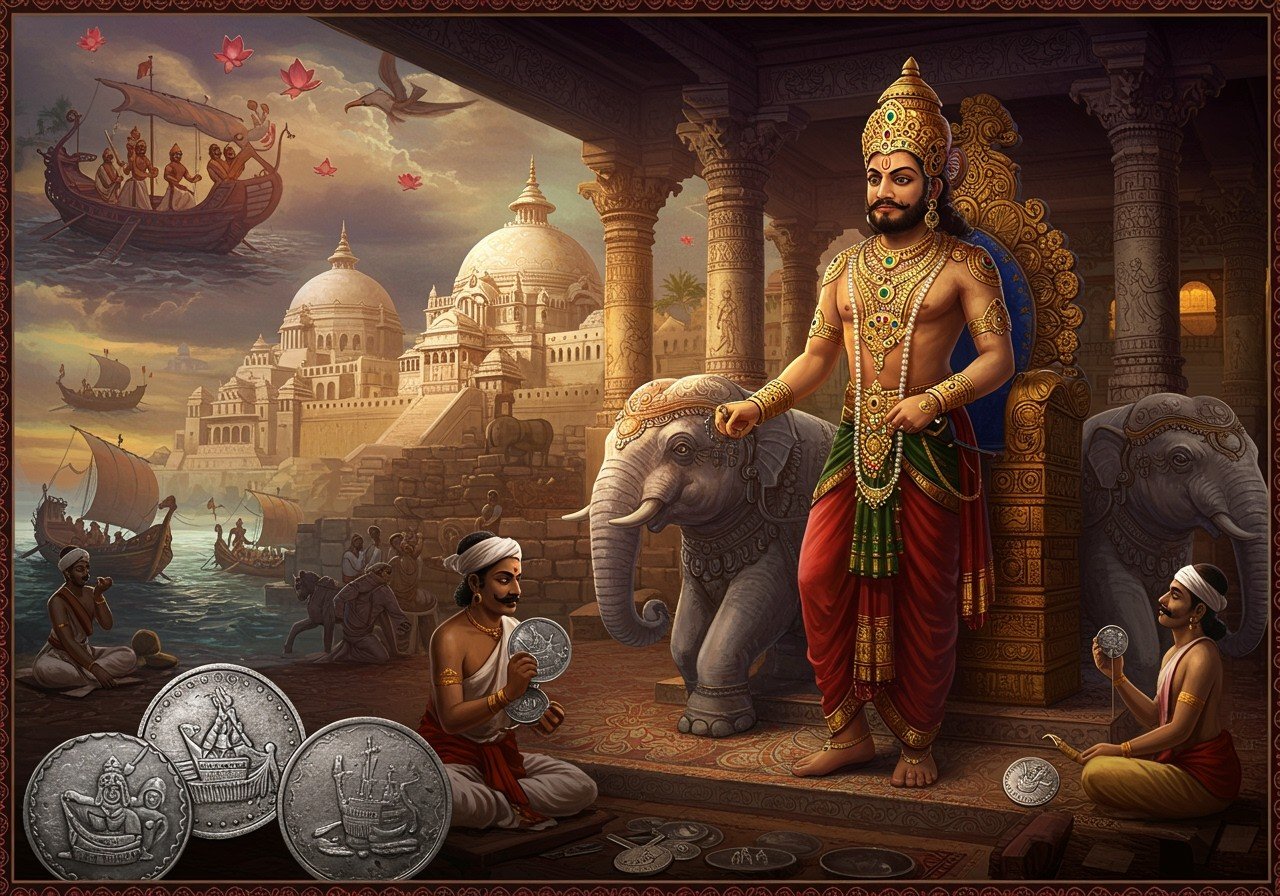
The Satavahana Dynasty, a pivotal chapter in Indian history, significantly shaped the culture, politics, and economy of ancient India. Emerging after the decline of the Mauryan Empire, the Satavahanas reigned from the late 2nd century BCE to the early 3rd century CE. They left an enduring legacy that continues to be studied and celebrated. This blog delves into the rise and fall of the Satavahana Dynasty, exploring their history, prominent rulers, achievements, and the factors that led to their decline.
Establishment of the Satavahana Dynasty
The Satavahana Dynasty arose during a period of political fragmentation following the Mauryan Empire’s decline. Simuka, the founder, established the dynasty in the late 2nd century BCE. He and his successors strategically consolidated power, expanding their territory across the Deccan region. Their capital city, Pratishthan (modern-day Paithan), became a major center of power.
The Satavahanas played a crucial role in revitalizing trade and commerce. Their control of vital trade routes significantly boosted economic activity. They also made notable cultural and religious contributions by patronizing both Buddhism and Brahmanism, evident in the construction of stupas and viharas.
Expansion and Key Rulers
The Satavahana Dynasty reached its zenith under rulers like Gautamiputra Satakarni and Vashishtiputra Pulumavi. Gautamiputra Satakarni’s reign witnessed substantial territorial expansion and military triumphs, including victory over the Western Kshatrapas. Vashishtiputra Pulumavi contributed significantly to the administration and consolidation of the empire.
Maritime trade flourished under the Satavahanas, connecting them with Rome, Southeast Asia, and the Middle East. The rulers implemented impactful social and economic policies, such as land grants to Brahmins and Buddhist monks. The coinage system they introduced offers valuable insights into their economy and trade practices.
Cultural and Economic Contributions
The Satavahana Dynasty profoundly influenced the cultural and economic development of ancient India. They were patrons of art and literature, promoting local traditions and languages like Sanskrit and Prakrit. Their economic policies stimulated trade and commerce through the establishment of trade guilds and urban centers. Their architectural contributions include rock-cut caves, temples, and stupas. They championed religious tolerance, supporting various religious practices. Their cultural policies significantly impacted the development of regional art forms and traditions.
Decline of the Satavahana Dynasty
The decline of the Satavahana Dynasty was characterized by internal strife and external pressures. Succession disputes weakened central authority, leading to instability. This was exacerbated by weak leadership, making it challenging to maintain control over their vast territories. External invasions, particularly by the Western Kshatrapas, further strained the Satavahanas. These incursions disrupted trade routes, leading to economic hardship and weakening their financial base.
Regional powers, such as the Chalukyas and Pallavas, exploited this instability, challenging Satavahana authority and contributing to further fragmentation. Shifting alliances among regional chiefs also accelerated their decline. The eventual fall of the Satavahana Dynasty around the early 3rd century CE led to the emergence of successor states. However, their legacy endured through their significant contributions to Indian culture and history.
Exploring the Satavahana Dynasty Through Poojn.in’s Cultural Offerings
Delving into the rich history of the Satavahana Dynasty can be a deeply enriching experience. Enhance your understanding and connection to this era by exploring the cultural goods and services available at Poojn.in. India’s largest cultural goods and services store, Poojn.in, offers a wide selection of items that can help you connect with the traditions and practices of ancient India. Whether you’re looking for statues of deities worshipped during the Satavahana period, traditional incense used in ancient ceremonies, or books detailing the dynasty’s history, Poojn.in provides a valuable resource for those seeking to deepen their appreciation of this fascinating period in Indian history.
-
Dive deeper into the spiritual practices of the Satavahanas with Poojn.in’s extensive collection of puja items, including diyas, incense, and statues, reminiscent of those used in ancient rituals.
-
Create a serene space for reflection and contemplation, inspired by the architectural marvels of the Satavahana period, with Poojn.in’s selection of home decor and spiritual furnishings.
FAQs about The Satavahana Dynasty
When was the Satavahana dynasty established? The Satavahana dynasty was established around the late 2nd century BCE.
How did the Satavahana dynasty end? The Satavahana dynasty ended in the early 3rd century CE due to a combination of internal conflicts and the rise of other regional powers.
Who were some key rivals of the Satavahana dynasty? Key rivals included the Western Kshatrapas, the Chalukyas, and the Pallavas.
What were the major achievements of the Satavahana dynasty? The Satavahana dynasty is renowned for its contributions to trade, architecture, and the patronage of Buddhism and Brahmanism. They fostered economic growth, built impressive structures like stupas and viharas, and promoted a climate of religious tolerance.
What was the capital of the Satavahana dynasty? The capital was Pratishthan, present-day Paithan in Maharashtra.
Who was the most famous ruler of the Satavahana dynasty? Gautamiputra Satakarni is widely considered the most illustrious ruler of the Satavahana dynasty.


